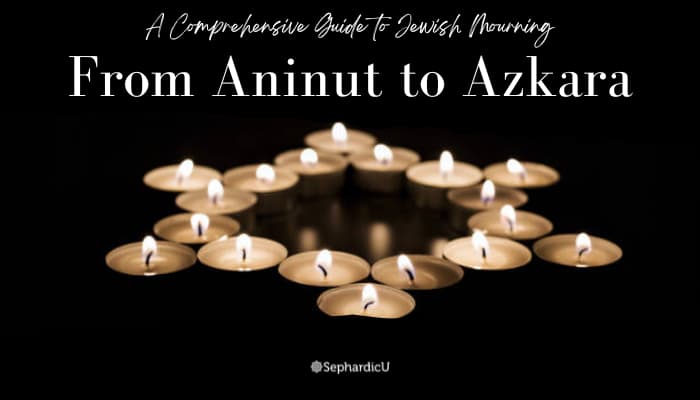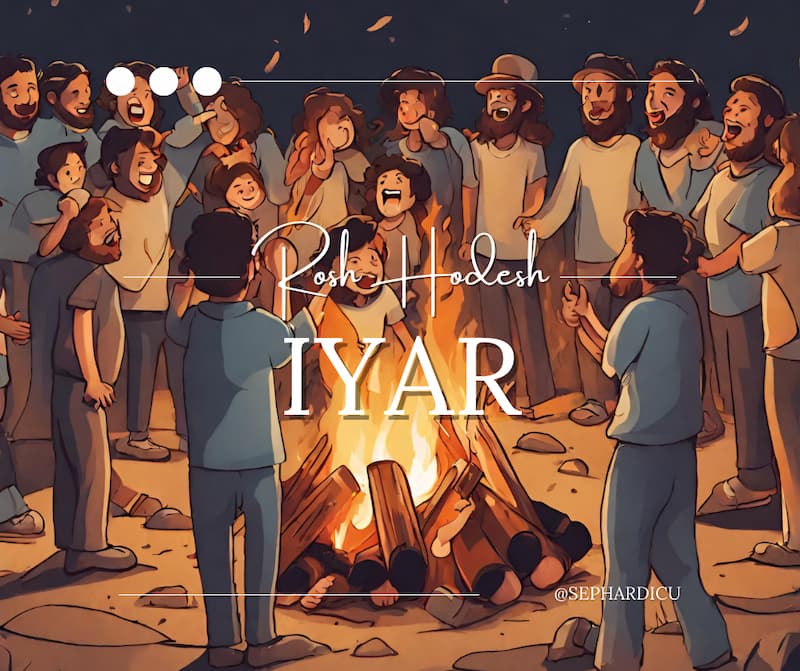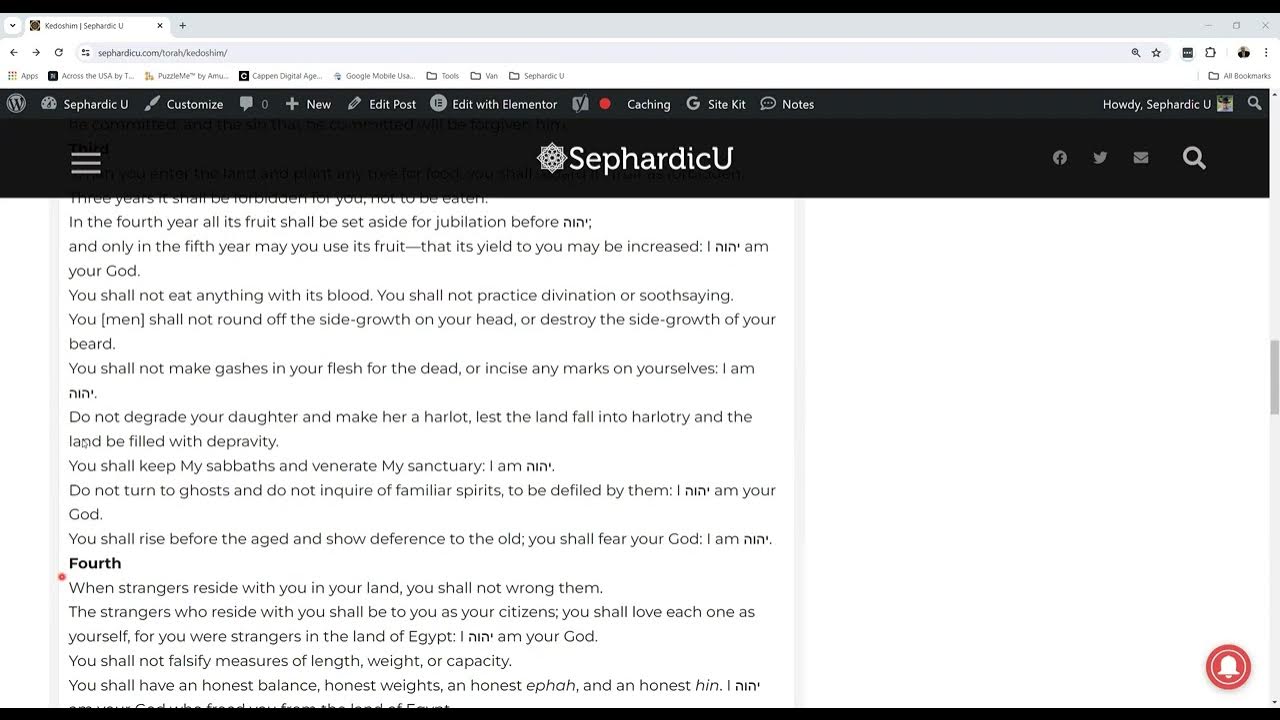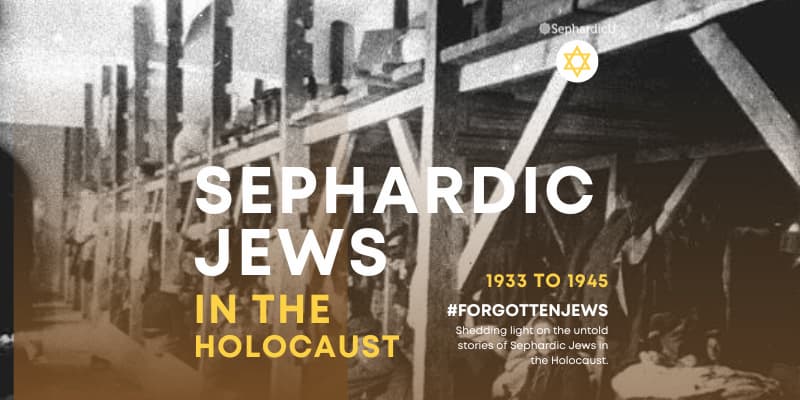Introduction
Welcome to Chapter 2 of our guide on Jewish mourning customs from a Sephardic perspective. In this chapter, we will delve into the traditions and practices surrounding Shiva, the period of mourning that follows the immediate phase of Aninut. Shiva holds immense significance in the mourning process, providing an opportunity for the bereaved family to embrace solace, receive support, and honor their loved one’s memory.
During Shiva, which derives its name from the Hebrew word for “seven,” mourners dedicate seven days to mourning the loss of a close family member. This period is characterized by communal support, reflection, and remembrance. In this chapter, we will explore the emotional and spiritual dimensions of Shiva, as well as the customs, rituals, and etiquette observed in Sephardic communities.
By understanding the customs and practices associated with Shiva from a Sephardic perspective, we aim to provide guidance and support to individuals and families navigating this sensitive time of mourning. The traditions surrounding Shiva offer comfort, healing, and a sense of belonging within the Sephardic community.
Join us as we explore the customs, rituals, and communal support surrounding Shiva, offering insights to honor and remember our loved ones according to Sephardic traditions.
The Practice of Shiva
Shiva is a time when mourners come together to support one another, share memories, and find solace in their collective grief. The customs and practices observed during Shiva in Sephardic communities include:
Keriah (Tearing of Clothing):
Keriah is a powerful and symbolic act of mourning in which immediate family members tear their clothing to express the depth of their grief and anguish. The tearing of clothing is typically done over the heart or by wearing a black ribbon. This physical act represents the profound rupture caused by the loss of a loved one and the irreparable void left in their lives. It serves as an outward manifestation of the internal pain and devastation experienced by the mourners.
Washing Hands:
Upon returning to the Shiva house after the burial, mourners engage in the ritual of Netilat Yadayim, the washing of hands. This act holds both practical and symbolic significance. Practically, it ensures cleanliness and purity before engaging in sacred rituals and prayers during the mourning period. Symbolically, it signifies a transition from the outside world to the sacred space of mourning.
Meal of Condolences (Seudat Havra’ah):
The meal of condolences, known as Seudat Havra’ah, is a significant aspect of Shiva customs. During the mourning period, family, friends, and members of the community come together to provide nourishment and comfort to the mourners. These communal meals alleviate the burden of meal preparation for the bereaved family, allowing them to concentrate on their grief and healing.
Sharing a meal creates an environment where stories and memories of the deceased can be shared, fostering connections and support among the mourners. It is a time for reflection, remembrance, and collective healing. In Sephardic traditions, there is a particular emphasis on including round items in the meal, such as olives, dried apricots, almonds, and other symbolic foods. These round items depict the circle of life and the eternal nature of existence. They serve as a reminder that life continues, even in the face of loss, and that the memory of the departed will endure.
Lighting Candles:
The act of lighting candles holds deep spiritual symbolism during the Shiva period. Candles are lit in the Shiva house to honor the soul of the departed and bring light into the space of mourning. The candles represent the eternal flame of the loved one’s soul and serve as a reminder of their spiritual presence during this time of mourning.
The lighting of candles is a poignant and solemn act that helps create a sacred and contemplative ambiance. It facilitates the process of remembrance, reflection, and spiritual connection. Each candle lit is a gesture of love, respect, and tribute to the deceased. The soft glow of the candles provides solace and comfort to both the bereaved family and the visitors, creating an atmosphere of warmth, tranquility, and spiritual illumination.
Mirrors:
In many Sephardic traditions, mirrors are covered or turned around during the Shiva period. This practice is based on the belief that during the time of mourning, the focus should be on internal reflection rather than external appearances. By temporarily suspending vanity and personal adornment, mourners are encouraged to turn inward and contemplate their emotions, memories, and spiritual connection to the departed.
The covering or turning around of mirrors symbolizes a deliberate shift in attention from outward appearances to inner reflection and introspection. It serves as a reminder that the true essence and significance of a person lie beyond physical appearances. This practice encourages mourners to channel their energy towards inner contemplation, personal growth, and spiritual connection during the Shiva period.
Pictures:
Displaying photographs of the deceased loved one is a common and cherished practice during Shiva. These photographs serve as a visual reminder of the person who has passed away and play a vital role in preserving their memory. They provide comfort, evoke cherished memories, and act as a catalyst for storytelling about the life and legacy of the deceased.
Pictures create a sense of connection and allow mourners to honor their loved one’s presence during the Shiva period. They serve as a focal point for reflection, celebration, and remembrance. Mourners and visitors often gather around these photographs, sharing stories, anecdotes, and memories, thus keeping the spirit and memory of the departed alive. The act of storytelling helps in the healing process and provides solace, as it allows mourners to honor and celebrate the life of their loved one in a collective and meaningful way.
Reciting Kaddish:
One essential aspect of Shiva is the recitation of Kaddish. Kaddish is a powerful prayer that holds profound significance for mourners during this mourning period. It is recited daily as part of the Shiva rituals, providing a space for mourners to connect with their faith and find solace in the presence of others who share their grief. The rhythmic repetition of the words creates a solemn and meditative atmosphere, offering comfort and a sense of spiritual connection.
The Shiva period also includes gathering for prayer services, known as the Shiva minyan, where mourners come together to recite prayers and offer support to one another. These prayer services often take place in the Shiva house or a nearby synagogue, providing a communal space for collective mourning. The recitation of Kaddish is an integral part of these prayer services, allowing mourners to express their devotion, honor the memory of their loved ones, and find comfort in their shared faith.
Sitting on low stools, abstaining from personal grooming, and receiving nourishment and support from the community are additional practices observed during Shiva. These customs reflect the recognition of grief, humility, and the temporary suspension of regular routines during this period of intense mourning.
By incorporating the recitation of Kaddish into our understanding of Shiva customs, we honor the rich spiritual heritage of Sephardic Jewish mourning practices and recognize the significance of collective prayer in providing solace and support during this period of mourning.
Conclusion
In this second chapter, we have delved into the customs and practices of Shiva from a Sephardic perspective. We explored the profound significance of Keriah, the tearing of clothing, as a symbolic act of mourning. We discussed the ritual of washing hands, which serves as a transition into the sacred space of mourning. The meal of condolences, Seudat Havra’ah, was highlighted as a communal gathering where nourishment and comfort are shared, emphasizing the circle of life through symbolic foods. The lighting of candles, covering of mirrors, and the display of pictures were explored as meaningful acts to honor the departed, encourage internal reflection, and preserve memories.
We also explored the recitation of Kaddish and the importance of the Shiva minyan as integral parts of the Shiva period, offering solace, support, and spiritual connection to the mourners.
As we continue our journey through the mourning process, let us embrace the solace and support that Shiva offers from a Sephardic perspective. May the customs, rituals, and communal connections bring comfort and healing to those who mourn. Together, we honor and remember our loved ones, finding strength in the collective wisdom of Sephardic traditions.
Chapter 1: Aninut – The Sacred Phase Between Death and Burial
Chapter 2: Shiva – Embracing Solace and Support During the Mourning Period
Chapter 3: Sheloshim – Healing and Reflection in the Thirty-Day Mourning Period
Chapter 4: Avelut – Mourning Practices and Observances
Chapter 5: Azkara – Commemorating the Anniversary of the Passing
Within these chapters, we will further explore the support and comfort provided by family, friends, and the community during the mourning period. We will discuss the meaningful practice of condolence visits, where loved ones gather to offer their support and share memories of the deceased. Additionally, we will address the coordination of meals, traditionally known as “Shiva meals” or “meals of consolation,” which are organized by family and friends to alleviate the burden of meal preparation for the mourners.
May this guide be a source of strength and understanding as we navigate the phases of bereavement together, drawing upon the rich traditions and wisdom of Sephardic Jewish mourning practices.









